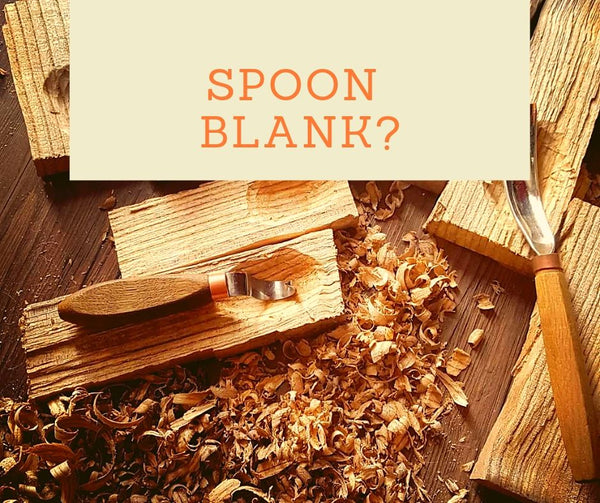
Greetings, fellow carving lovers. Today we are going to talk about methods of cutting wooden spoons. We can define four ways that differ due to the type of your wood blank. Each wood type can be carved easily with the knife or using a saw. Which one will be perfectly suitable you can see below.
Thin and softwood:
1. Bench knife
2. Coping saw
Thick and hardwood:
1. Drawknife
2. Scroll saw
The first type of wood
Let’s move forward to the understanding of proper usage of softwood spoon blanks.
Bench knife – it is frequently used to do general shaping of a spoon. Here is a piece of advice – work with your bench knife on the direction of the wood grain of your spoon blank as much as possible in order to receive the better result and make further carving simpler. If you will carve small slivers of wood keeping your blade angle low to the wood will prevent you from stacking in wood if it goes deeper on the early beginning. But what should you do if it still happened? Just pull the knife in the back direction and re-cut this area using proper blade angle. You can also ask how to deal with curves on your spoon blank! Here is your answer – do some push cuts towards the center of the curve, then reverse wooden block in your hand and make some cuts in the opposite direction. As far as you will work along the sides of the pattern, your spoon will receive proper shapes. In conclusion, this method and tool choice remains the most time consuming from our list but still, you would like to spend some pleasant hours, moving your razor-sharp bench knife across the wood until your result will be reached.
Coping saw is another way of carving a wooden spoon blank if you choose softwood. It is an amazing choice of the tool if your point is quick reducing your wooden blank into the raw spoon. The structure of the saw gives you the undeniable opportunity to cut your blank right and tight. But still, how exactly should coping saw be used? First of all, create your spoon pattern on chipboard using a marking pen. Before you start your cuts with coping saw you want to be sure that the working surface is non-moving and gives you a lot of space to change the working blade angles. This blade gives you versatile opportunities in making your patterns. It is important to notice that the ending of each saw arm is a small levered screw that may hold the end of the saw blade. If you work on a push stroke it is a good choice to set your teeth pointed blade into your saw. Simply when you cut your first side of your future spoon you need to replace blank on the working surface in a way you can do the same with another side.
The second type of wood. As well as soft, hardwood has some specific tools which would be better to work with. And here we will name them and talk how should they be used properly.
Drawknife – almost everyone is familiar with the structure of this two-handed straight blade. And here is no surprise that it is good to make rough shapes from your spoon blank. It makes possible to remove long slivers of wood quickly and here is a remarkable note, that need to be heard especially by newbies: this knife is must-have in your collection for stick shaping. Firstly, you would like to find a strong and reliable non-moving base where you will place your spoon blank fixed during your carving session. The two-handed blade gives you a significant chance to deal with a bigger amount of pressure on your cuts. So it is mostly perfect on blanks with straight grain lines, giving you the opportunity to use long and powerful strokes with no significant difference if you will pull or push it.
Scroll saw – the quickest and very simple way to cut your spoon blank. Everything that is required from you in this mechanical way of carving is marking your spoon pattern clearly and slowly pushing your shape sides towards fast-moving scroll saw blade. Remember, you need to pay enough attention as this blade is not controlled by your hands and may cause bigger damage than others in this listing. However, it is mostly used by manufacturers as it is a fast and simple way. But true carving lover might enjoy doing everything on his own, not using some mechanized tools.